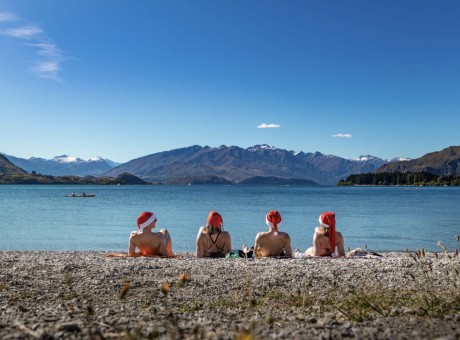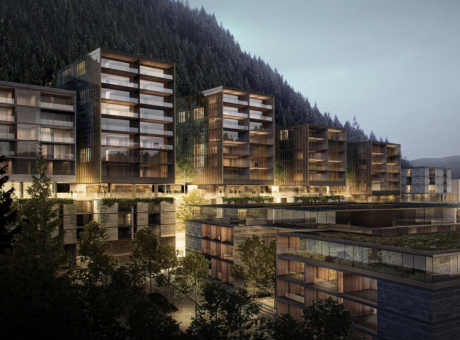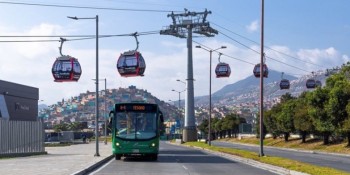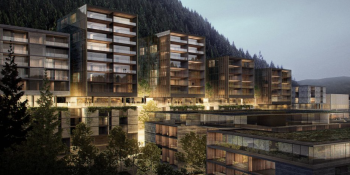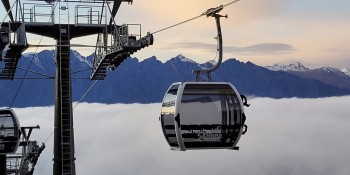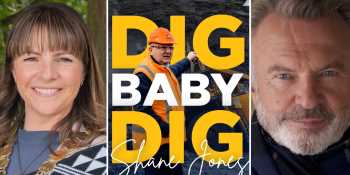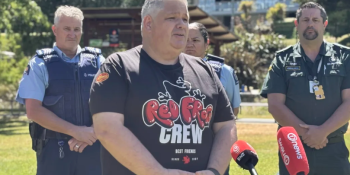Hospital crisis: not a single surgeon or operating theatre in Queenstown or Wanaka
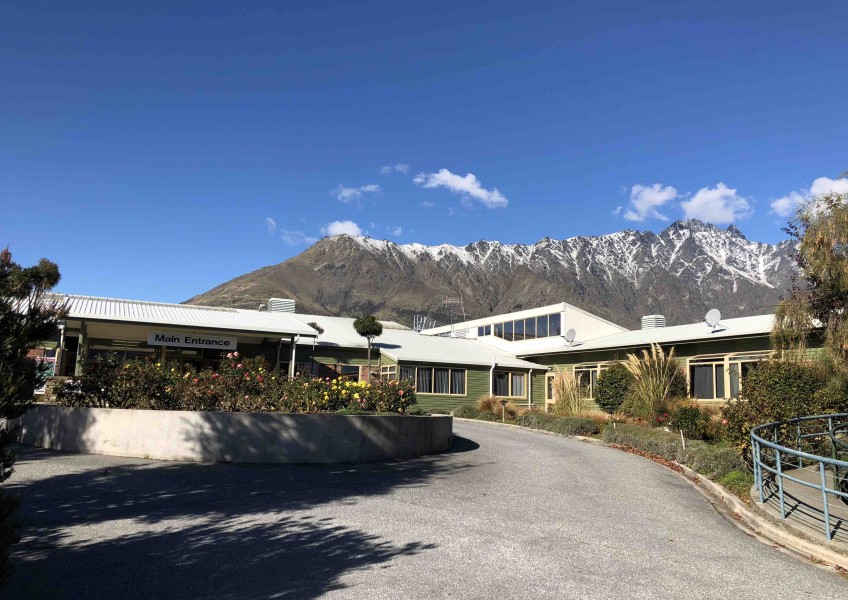
The cash-strapped Southern District Health Board says that in spite of over three million tourists visiting the Southern Lakes each year, only three new hospital beds will be added to what it describes as Queenstown’s already “woefully inadequate” hospital.
Defending the decision, the Southern District Health Board (SDHB) says the rapidly growing populations of Queenstown and Wanaka don’t qualify for significant investment and that “growth does not equal need". Spokesman Karl Metzler, who is managing the Southern Lakes public health strategy with the SDHB, said “we have tourists, a transient population and people are quite healthy and affluent. So the need and demand is not what it is in South Dunedin or Mataura, for instance".

SDHB's Karl Metzler. "Growth does not equal need."
Reacting to the SDHB’s position, Mayor Jim Boult says the current hospital is “a joke”, not fit for purpose and does not have even a single surgeon, let alone an operating theatre. Wanaka has no hospital at all, with residents having to drive over an hour to the equally modest Dunstan Hospital at Clyde, near Alexandra.
The standoff is provoking the SDHB to consider buying into a private hospital planned for Queenstown and sending a clear signal that it is ready to do deals with private partners who can provide professional private health services in the area.
But the increasing reliance on public donations and the private sector is starting to raise questions over whether the Southern Lakes has a viable public health service at all. At the same time as these issues become increasingly problematic, the SDHB is building a new $1.4 billion hospital in Dunedin and is trying to reduce a $40 million deficit inherited from a management team who, three years ago, who were replaced by three Government-appointed Commissioners.
That deficit has been halved, but investment in Queenstown’s hospital over the next five to seven years has been limited to $6.5 million, with the emphasis being on improvements to the emergency department where around 50% of patients are injured tourists. Most are treated under ACC in spite of often having comprehensive travel and health insurance.
When is a hospital not a hospital?
Mayor Jim Boult refuses to buy in to the SDHB’s arguments, even though he says he is in “worthwhile” but urgent talks with Commissioner Kathy Grant and chief executive Chris Fleming.
Even SDHB Deputy Commissioner Richard Thomson’s assessment of the Lakes District Hospital is that it is “woefully inadequate”.
“I would say a joke was probably a better term,” says Boult. Though he quickly adds that the staff there do a great job - heroic even.
What's his view on Karl Metzler’s “growth does not equal need” comment? “I disagree with that completely,” says Boult.

SDHB Commissioners Richard Thomson (deputy) , Kathy Grant and Graham Crombie (deputy).
Fleming can see no solution in sight. “We are the country’s biggest DHB area and, if it was flat like Belgium, the answer would be easy. We’d put a big hospital in the middle and everyone could travel there.”
Instead residents in the Southern Lakes face a three to four hour drive to either Invercargill or Dunedin for hospital treatment. Most Queenstown residents don’t even consider the Lakes District Hospital when they need hospital treatment as its facilities are so basic.
Janeen Holmes is the operations manager at the tiny Queenstown hospital. The hospital is so small it does not even have its own general manager or chief executive. It feels like a remote, quaintly aging, rose-clad outpost of an absentee owner that is based hundreds of kilometres away in Dunedin, with bigger issues on its mind.

Lakes District Hospital operations manager Janeen Holmes. "We try to get money from patients when we can."
Holmes agrees the hospital is basic but says the answer might be to try to access funds from the Ministry of Tourism. “We treat a lot of tourists,” she says. They usually have comprehensive health insurance but instead get funded by ACC, as adventure tourism accidents and even pub accidents are fully covered by the New Zealand taxpayer.
“We try to get money from patients when we can. Some American tourists just can’t believe that our service is covered by ACC and they can make quite generous donations.” It’s tempting to imagine a “tipping is encouraged” sign at the hospital entrance.
In a series of frank and open interviews, SDHB bosses are quick to acknowledge the problems.
Deputy Commissioner Richard Thomson is proud of the fact that the historic $40 million deficit has been halved. He claims though that health care and future investment have not been significantly impacted by the deficit reduction process.
He agrees that people have been harmed by multiple SDHB failures, but refers to “turning over rocks” and finding inherited problems underneath. The SDHB’s failures have been widely reported … cancer treatment delayed, slow responses to other critical illnesses, patients losing their eyesight because of delays, a lack of maternity care in the region, poor hospital food, bad working conditions for doctors and nurses. The list is a long one, but echoes similar problems at other critically under-funded DHBs up and down the country.
Karl Metzler, the Gore-based public health chief executive who is working with the SDHB 20 hours a week to find answers for Queenstown and Wanaka, is in an ironic situation. His own hospital was closed back in 1999 by the SDHB, only to be re-opened the next day by a community-funded trust working in partnership with the SDHB. It’s a pattern still being repeated all over Otago and Southland. Millions upon millions of dollars of community money is being poured into the charitable rescue of fading, inadequate public health facilities.

Mental health referrals are increasing across the Southern Lakes. Suicides are also increasing and the police have called for more mental health resources as they struggle to cope with the problems and tragedies. Source: SDHB.
Metzler does concede that even though the current population-based system means Queenstown and Wanaka miss out on the big ticket items, the increasing numbers of local working poor need more support – but he says that should come from GPs and mental health specialists, not new hospitals.
Following the pattern well established elsewhere in Otago and Southland, Queenstown is digging into it’s collective private pocket to prop up the tiny “interim” hospital that gets shaken to its wooden core every time a plane lands or takes off at the nearby airport - and that’s about every five minutes.
Jayne Macdonald heads the Lakes District Hospital Foundation, a new Queenstown Trust set up to support the facility. She told me that the previous local attempts to get the hospital fixed we “too adversarial” and the new trust would collaborate with the SDHB rather than fight it. I ask how she feels about the need to prop up our “taxpayer funded” public health system.
“I’m disappointed that it’s necessary,” says Macdonald. “But we have to be realistic … there's no point in finger pointing. Our focus is on making things better.”

Lakes District Hospital Foundation chair Jayne Macdonald with SDHB chief executive Chris Fleming. "Disappointing" that public health needs so much private money.
Private health to the rescue
Mayor Jim Boult wants to see a proper hospital in the Southern Lakes. A hospital that actually has surgeons and operating theatres. He says an interim step would be the construction of a private hospital which the SDHB could lease space in. Remarkables Park developer Alastair Porter has long planned to build something along these lines and a private MRI scanner has just popped up in a shipping container office near Porter’s gleaming glass headquarters near the airport. Porter is building what amounts to a very shiny, upmarket new city near the airport, complete with convention centre, new hotels and a $50 million gondola, much to the annoyance of retail lobbyists who want to keep business focussed on the current overcrowded Queenstown town centre. A large private hospital at Remarkables Park would be seen as a win for Porter, but could also dig the SDHB out of an ever-deepening hole.
SDHB chief executive Chris Fleming and deputy commissioner Richard Thomson both agree with Boult. This would be a good way forward. They already lease space in the private Mercy Hospital in Dunedin and give the impression that anyone offering a private hospital deal in Queenstown would get their arm bitten off in a frenzy of SDHB dollars and enthusiasm. “We don’t want to pay private rates though …,” the SDHB bosses add cautiously, fearful that their bargaining position might be seen as weak.
For Mayor Jim Boult though, the bargaining is not the issue. He’s aware that multiple very large scale risks face the region. A massive earthquake, a commercial aircraft crash at Queenstown’s hyper-active international airport, a large scale tourist bus crash – the list goes on. Many of these scenarios have the power to dent, or even halt, our nationally important tourism industry, exactly as happened recently in both Christchurch and Kaikoura following the earthquakes there.
The SDHB response is clear and chilling. It says neither its Dunedin or Invercargill hospitals could cope with most of those situations either.
We are on our own. #
Read: Earthquake management boss calls Queenstown hospital plans "ridiculous."





